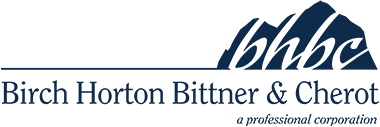Written by: Suzanne Cherot
Real estate law has been the focus of my practice for many years. I have represented commercial real estate owners and developers of office buildings, medical buildings, hotels and retail stores, owners and developers of residential subdivisions, owners of mobile home parks, and nonprofit corporations that develop housing projects. The legal work has covered the entire gamut of drafting and negotiating documents for purchases, sales, leases and financing of a variety of real estate projects throughout Alaska. The organization and closing of these transactions with clients, lenders, and title companies are always interesting and each transaction presents its own unique issues.
Early in this practice, I did not anticipate an unexpected reward of real estate practice – seeing the completed construction of projects in the community.
Over 30 years ago, we assisted a small group of visionary residents of Seward, Alaska during the inception and development of the Alaska SeaLife Center. What was a dream of a small group of people became a reality. The project involved agreements with the Exxon Valdez Trustee’s Council, the State of Alaska, and the City of Seward. In spite of construction and early operational challenges, the SeaLife Center is now a wonderful and vibrant tourist destination and is renown for its environmental and scientific research of Alaska’s marine ecosystem and its species, and a learning center for children. When I visit Seward and the SeaLife Center, I experience a great sense of satisfaction knowing the role we played in making this happen.
I experience the same sense of satisfaction as I drive around Anchorage and see some of the commercial and real estate developments in which I played a small part but which have had a big impact on Anchorage families and businesses.
Low income tax credit housing projects are particularly rewarding. During the last ten years, I have had the opportunity to work with community-focused organizations such as Cook Inlet Housing Authority and RurAL CAP during the initial financing and investment stage through the closing of loan term financing. All of these owners and developers are dedicated to improving the neighborhoods where the projects are located. The projects help the elderly, disabled, and low income individuals who want to provide safe, clean, and well located housing for their families and children. The projects have transformed neighborhoods and improved the quality of life for hundreds of Alaskans.
The legal representation for all real estate work, and particularly for low income tax credit projects is technical, complex and demanding. However, the unexpected reward is seeing the tangible completed results.
